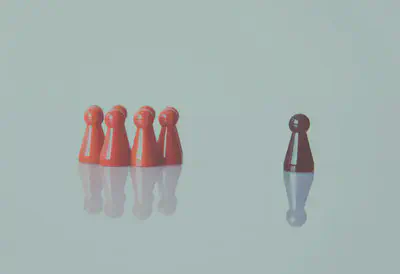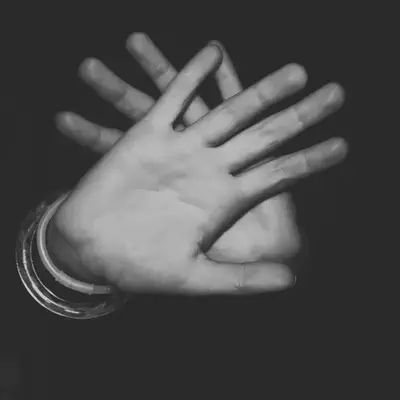Schizoid Personality Disorder - The DSM’s Perspective…and Mine
Schizoid personality disorder has been a thing since the very first edition of the DSM in 1952 involving avoidance of relationships, inability to express aggression/hostility, and autistic thinking (self-absorbed fantasy/daydreaming) while staying in reality1. The most recent (2022) criteria of schizoid personality disorder can be found in the DSM-5-TR (Diagnostic and Statistical Manual of Mental Disorders, Fifth Edition, Text Revision2). While we have kept some semblance of the original understanding of schizoid personality disorder, we lost huge pieces involving the humanness of the schizoid. In my own opinion, the current criteria for schizoid personality disorder in the DSM is totally lacking, so my view is quite evident within this blog. Let’s take a look!
| Note: Text in these boxes are the exact words from DSM-5-TR2 |
|---|
Schizoid Personality Disorder Criteria
| “A pervasive pattern of detachment from social relationships and a restricted range of expression of emotions in interpersonal settings, beginning by early adulthood and present in a variety of contexts, as indicated by four (or more) of the following2:” (p. 741) |
|---|
The DSM-5-TR gives a framework about schizoid personality disorder. The patterns of schizoid personality disorder have to be pervasive, meaning noticeable throughout most parts of life. Schizoid personality traits often show up in childhood, but the patterns must begin by early adulthood across different settings (e.g. home, school, work). Like all personality disorders, it doesn’t just pop up when you’re 50; it’s intertwined with who you are and your life story.
The main patterns involved in schizoid personality disorder are interpersonal detachment and restricted emotional expression in social settings. There’s distancing of the self from others and interactions involving social energy. And especially in social situations, there is reduced intensity and range of emotional expression. But my question is….Maybe they can express emotions just fine all by themselves? And this description basically describes introverts, right? Well, there is more. There also has to be four or more of the following noted in the boxes below.
| “Neither desires nor enjoys close relationships, including being part of a family2.” (p. 741) |
|---|
This is further explained in the diagnostic features where it was stated that schizoids “appear to lack a desire for intimacy, seem indifferent to opportunities to develop close relationships, and do not seem to derive much satisfaction from being part of a family or other social group2” (p. 742, emphasis added). So basically, criterion 1 is telling us about an internal feature of those with schizoid personality disorder - that they don’t want or like relationships - but then it’s explained using words such as “appear” and “seem” like they don’t want/like connection…which is external…so which is it? 🤔
| “Almost always chooses solitary activities2.” (p. 741) |
|---|
This is self-explanatory. The individual with a schizoid personality disorder chooses alone time over social time. They are viewed as “loners” by others and “appear socially isolated2” (p. 741). There’s that word again: appear. To others, schizoid personalities are observed to be seclusive. But can I just point something out? …Since when is choosing to do activities alone a checkmark for pathology? Are we criminalizing introversion here? Yes, yes, I know it’s in the context of other criteria too, but seriously?! Susan Cain was definitely onto something with her book Quiet. What’s wrong with wanting to read a book instead of going to a party? Or work on computer programming instead of hanging out with friends?
| “Has little, if any, interest in having sexual experiences with another person2.” (p. 741) |
|---|
Again, this is self-explanatory. The associated features of the DSM does note that those with schizoid personality disorder don’t often date or marry “because of their lack of social skills and lack of desire for sexual experiences2” (p. 742, emphasis added). This is a deficit-based conceptualization of schizoid personalities. Psychoanalytic perspectives have noted that schizoids tend to channel their sensual intensity into work (e.g. music, writing, computers) instead of people, because intimacy could mean enmeshment3, which is so scary for the schizoid. Work or other cerebral pursuits are much safer than keeping up with a significant other! 😜
| “Takes pleasure in few, if any, activities2.” (p. 741) |
|---|
Another word for this is anhedonia, or an inability to enjoy things. You know how there are some people out there who LOVE skydiving or being in a cage with sharks or whatever thrill seeking activity floats their boat? Well, schizoid personalities are basically the opposite. They’re easily overwhelmed and disconnected from pleasure, so they might not like walking on a beach (too much sand that gets everywhere), watching a sunset (beautiful, but so are the philosophical thoughts they might be focused on), or having sex (much too intrusive). Plus, even if they do experience pleasure from those kinds of activities, they don’t show it, so how would we even know? Interestingly, the anhedonia in depression is different from the grey, disconnection-related anhedonia schizoids tend to experience4.
| “Lacks close friends or confidants other than first-degree relatives2.” (p. 741) |
|---|
There’s not really an additional explanation in the DSM for this criterion, which is just stating the external view of the first criterion’s internal dislike and rejection of relationships. They’re detached from others…we get it… this one just feels redundant to me. My own opinion is that schizoids don’t feel people aren’t safe, so why would they connect with others? Would you keep petting a dog that threatens to bite you or actually does bite you? No!
| “Appears indifferent to the praise or criticism of others2.” (p. 742) |
|---|
Here, we finally have an actual criterion that highlights how others view those with schizoid personality disorder, instead of assuming their internal process. Ironically, to other people, schizoids appear to not care at all about what others think of them. They don’t react to others’ approval or criticism of them - at least not on the outside. My bias is coming out though. Like, why is this a “bad” thing…?

| “Shows emotional coldness, detachment, or flattened affectivity2.” (p. 742) |
|---|
I think we finallyyyyy got to the meat of how others view schizoid individuals here. In social settings, the schizoid reacts differently than society thinks they should, leading others to think they might “seem socially inept or superficial and self-absorbed2” (p. 742). They don’t tend to show emotions (flat affect) or “appropriate” social gestures. The diagnostic features in the DSM does note that schizoids don’t report feeling strong emotions, especially joy and anger, so they come off as cold, passive, and aloof. But this is my favorite part: “However, in those very unusual circumstances in which these individuals become at least temporarily comfortable in revealing themselves, they may acknowledge having painful feelings, particularly related to social interactions2” (p. 742)… sooooooooo… they’re capable of experiencing emotions and want social connection (or else why would it be painful?)… they just don’t reveal it!!!!
Think my analysis of the DSM’s gross misrepresentation of schizoid personality disorder is out of bounds? Well, maybe. But Millon agrees (even though I don’t like his view of schizoid either). That’s a topic for another day! 😉 Millon wrote,
“The DSM diagnostic criteria focus almost exclusively on what is absent from the schizoid personality that might be present in normals. Rather than give the construct its own intrinsic traits, the DSM tells us what it lacks, namely, any capacity for emotional experience, motivation, sexuality, or interpersonal sensitivity and relatedness. Defining a personality disorder through what it lacks is highly questionable. Take everything away, and nothing of substance remains5” (Millon, 2004, p. 374, emphasis added).
Also, schizoid personality disorder doesn’t involve psychosis and isn’t autism spectrum disorder (Criterion B), but I’ll hit on those topics soon! In the meantime, if you want to better understand and care for a schizoid in your life, or if you are a schizoid personality and want to explore it, feel free to reach out! You can look on Psychology Today, or if you’re in Virginia, check out our private practice, Quest Psychological and Counseling Services for available services.
References
-
American Psychiatric Association. (152). Diagnostic and statistical manual: Mental disorders (1st ed.). https://www.turkpsikiyatri.org/arsiv/dsm-1952.pdf ↩︎
-
American Psychiatric Association. (2022). Diagnostic and statistical manual of mental disorders: DSM-5-TR (5th edition, text revision.). https://doi.org/10.1176/appi.books.9780890425787 ↩︎ ↩︎ ↩︎ ↩︎ ↩︎ ↩︎ ↩︎ ↩︎ ↩︎ ↩︎ ↩︎ ↩︎ ↩︎ ↩︎ ↩︎
-
McWilliams, N. (2011). Psychoanalytic diagnosis: Understanding personality structure in the clinical process (2nd ed.). Guilford Press. ↩︎
-
Millon, T. (2011). Disorders of personality: Introducing a DSM / ICD spectrum from normal to abnormal (3rd edition). John Wiley & Sons, Inc. ↩︎
-
Millon, T., Grossman, S., Millon, C., Meagher, S., & Ramnath, R. (2004). Personality disorders in modern life (2nd ed.). Wiley. ↩︎







